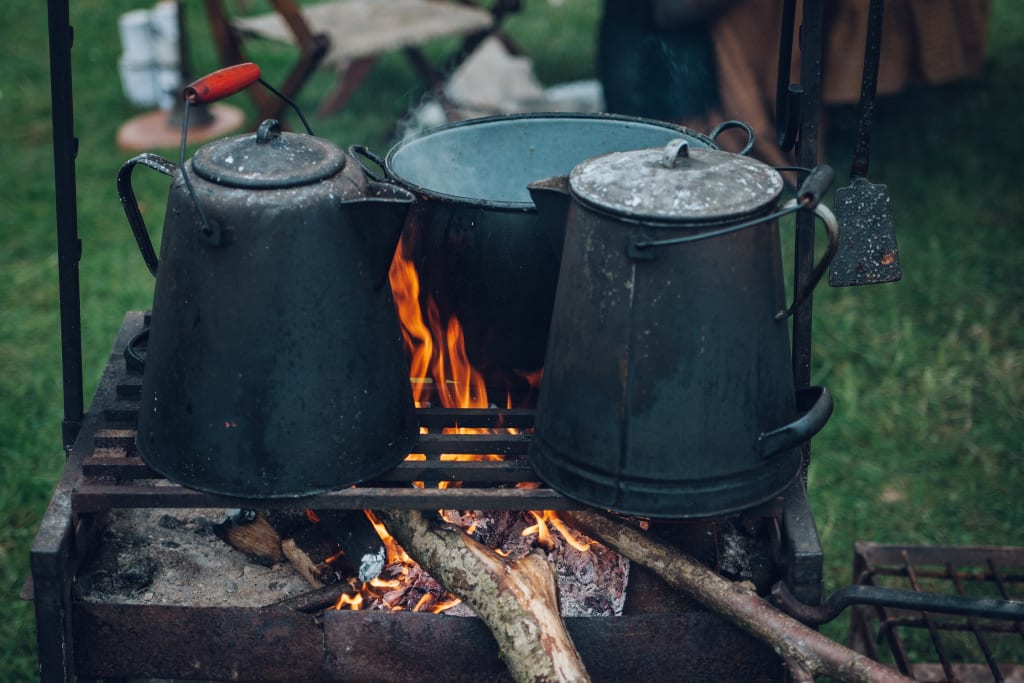Crafting Excellence: The Art and Artistry of Handmade Iron Kettles
Exploring the Intricate Process Behind Japan's Pricey Traditional Kettles

For centuries, artisans have dedicated themselves to the painstaking art of crafting iron kettles. These seemingly simple vessels, designed solely for boiling water, have been created using an age-old method that involves pouring molten iron into molds, resulting in a piece of functional art. While one might assume that such a utilitarian item would come with an affordable price tag, the reality is quite the opposite. Handmade iron kettles can cost over three hundred dollars each, a price that leaves many wondering: who makes these kettles, and what makes them so expensive?
The Birth of Iron Kettles in Iwate Prefecture
The heart of this time-honored craft beats in Iwate Prefecture, Japan, where iron kettles have been lovingly produced for centuries. Every journey into kettle creation begins with a sketch, and at the helm of this artistry is Nobuk Miya, the steward of Kamasata, a workshop founded by his grandfather.
Designing a new kettle is a laborious process, taking Nobu two to three years to perfect. But before the mesmerizing transformation of molten iron can begin, the mold takes center stage.
The Artistry of Molding
The mold, consisting of three parts that form a gap for pouring the iron, is at the core of the kettle-making process. While the core is used once and discarded, the outer molds are reusable, typically for two to three rounds of kettle creation, depending on their design.
What sets these iron kettles apart is the intricate arare pattern, a bumpy texture that defines their appearance. Astonishingly, this pattern is the result of around 2,000 meticulously placed dots, all done by hand.
Artisans coat the core with charcoal dust to aid in its separation from the iron. It is then delicately positioned within the outer mold, but the true outcome remains uncertain until the iron has cooled.
The Crucial Pour
The anticipation builds as the iron begins to melt, and the moment arrives for the precarious pour. This is a perilous and physically demanding task, where a mistake could jeopardize the entire kettle. Experience and confidence are paramount.
Once the iron has cooled, the results become visible, bearing testimony to the artisan's dedication and skill.
The Unique Flavor of Uncoated Iron
These traditional iron kettles do not feature an enamel coating on the inside. Instead, they are subjected to intense heat, reaching 900 degrees Celsius, atop a bed of charcoal. This process creates an oxidized layer that helps deter rust. This uncoated interior subtly alters the taste of boiled water, becoming a cherished feature for many enthusiasts.
The Final Touch: Lacquer and Coloring
Before completion, the kettle undergoes one of the most skill-intensive phases. Nobu carefully heats the kettle and applies lacquer coating, expertly coloring the exterior, adding the finishing touches that elevate each kettle into a work of art.
The Price of Artistry
The price of a handmade iron kettle can range from several hundred to as much as two thousand dollars, far surpassing the cost of mass-produced counterparts. Yet, customers willingly invest in these kettles, drawn not only to their unique aesthetic but also to the unhurried pace at which they are created. The design embodies "wabi-sabi," a concept challenging to translate directly but closely tied to the appreciation of imperfection and mindfulness.
The Resurgence of a Tradition
Iron kettles enjoyed prominence in Japan during the 17th and 18th centuries, particularly in tea ceremonies. However, they faced competition from convenient mass-produced alternatives after World War II. In recent years, renewed interest in their aesthetic qualities has rekindled demand. Yet, this surge has also spawned imitations, often manufactured abroad, featuring enameled interiors and lacking the authenticity and unique qualities of the traditional version.
Preserving a Centuries-Old Craft
Despite increasing popularity, Nobu acknowledges that demand for these kettles alone cannot sustain the business. However, with the commitment of individuals like Shotaro, who has trained in the art of crafting iron kettles, there remains hope for the continuation of this centuries-old craft.
In the end, handmade iron kettles stand as a testament to the enduring power of tradition and the beauty that can be found in the most functional of objects. These kettles remind us of the value in embracing imperfections and cherishing the artistry of the everyday.
About the Creator
Enjoyed the story? Support the Creator.
Subscribe for free to receive all their stories in your feed. You could also pledge your support or give them a one-off tip, letting them know you appreciate their work.
Reader insights
Nice work
Very well written. Keep up the good work!
Top insights
Compelling and original writing
Creative use of language & vocab
Easy to read and follow
Well-structured & engaging content
Expert insights and opinions
Arguments were carefully researched and presented
Masterful proofreading
Zero grammar & spelling mistakes
On-point and relevant
Writing reflected the title & theme






Comments (2)
Good work very informative ......
As a Southerner (United States south,) I am well-acquainted and grew up with iron skillets. But I never knew about the beautiful art that was behind their crafting. Thank you for enlightening me. I now have a deeper respect for my iron skillet of which I cook cornbread in all the time.